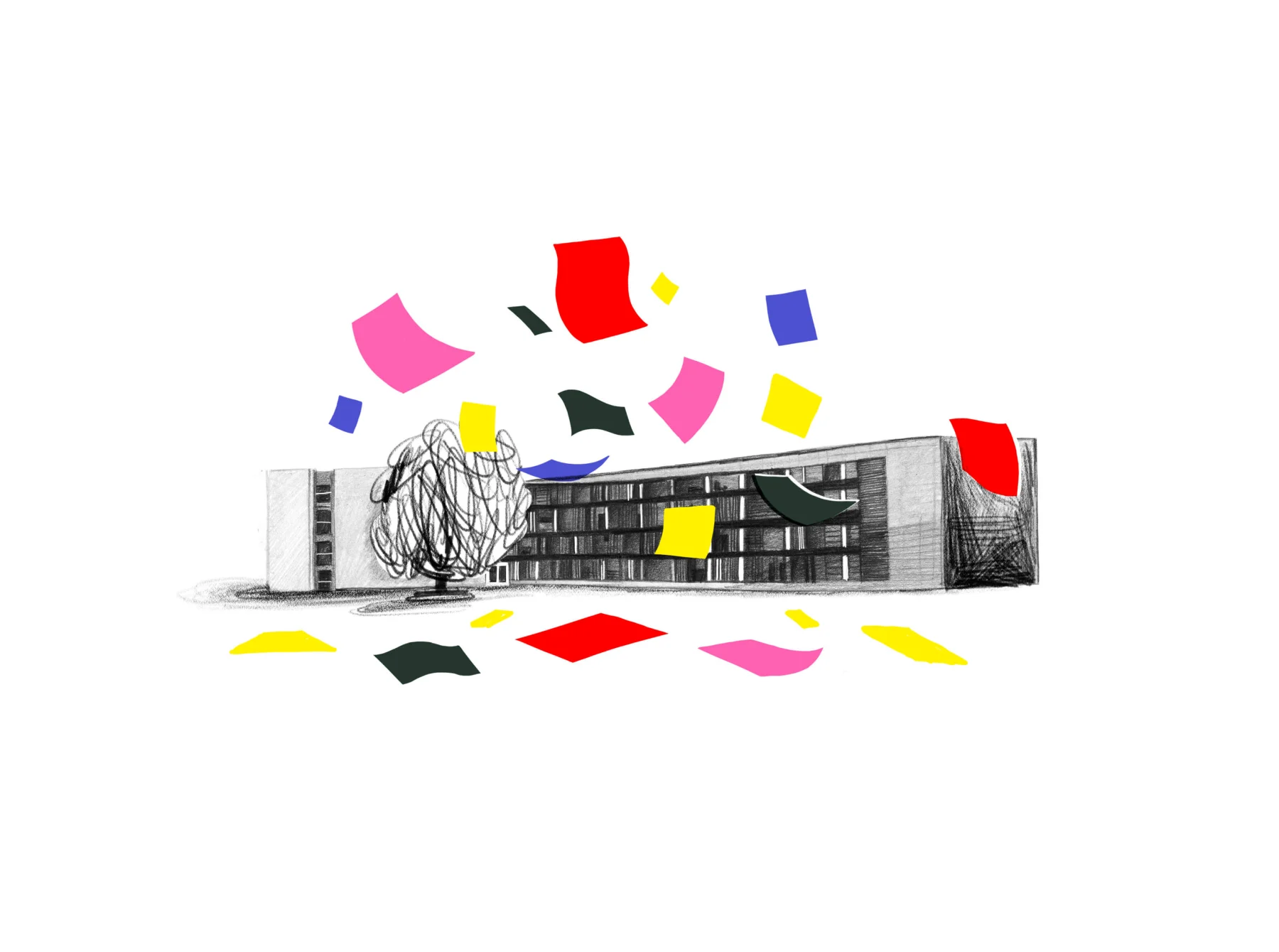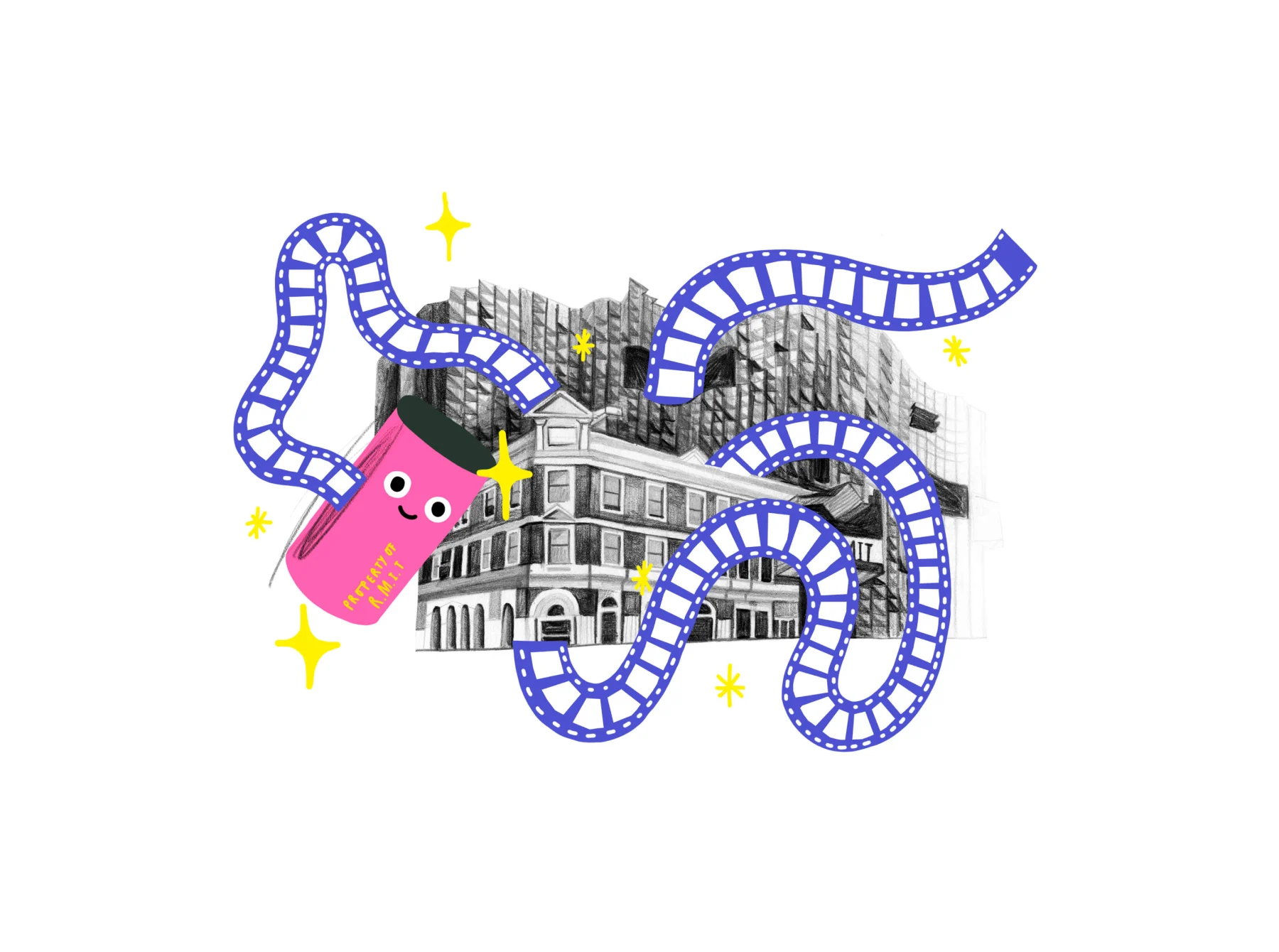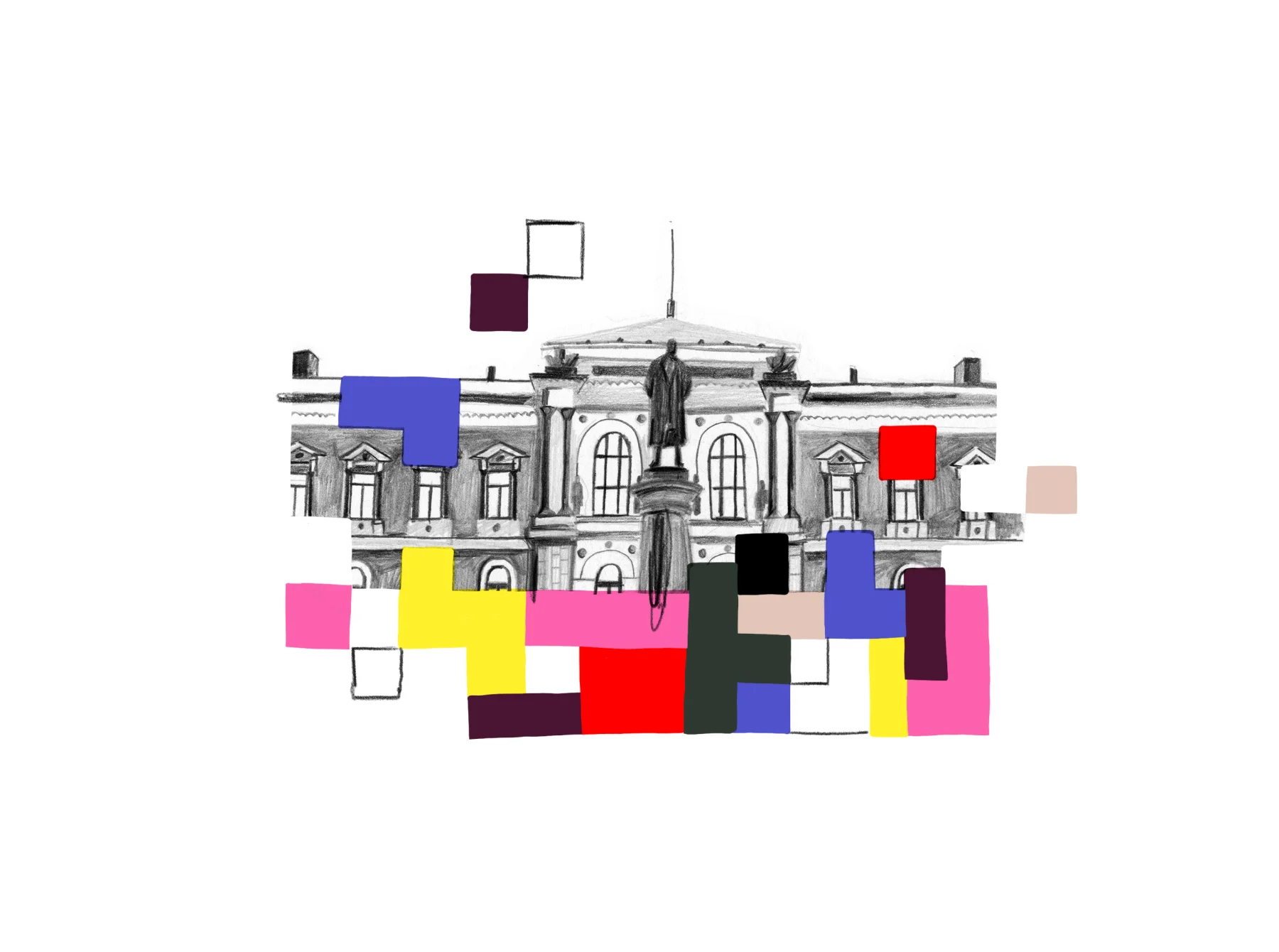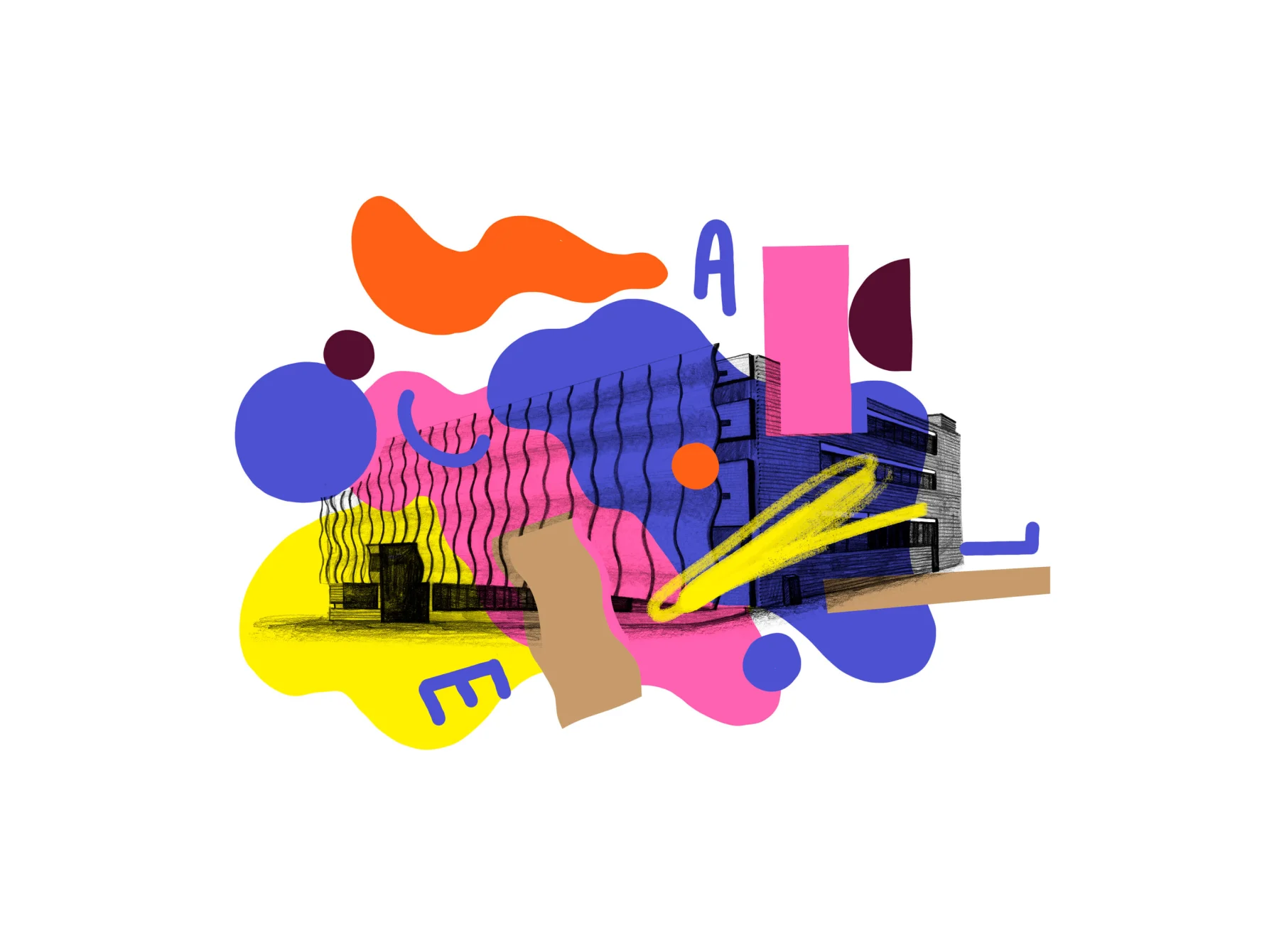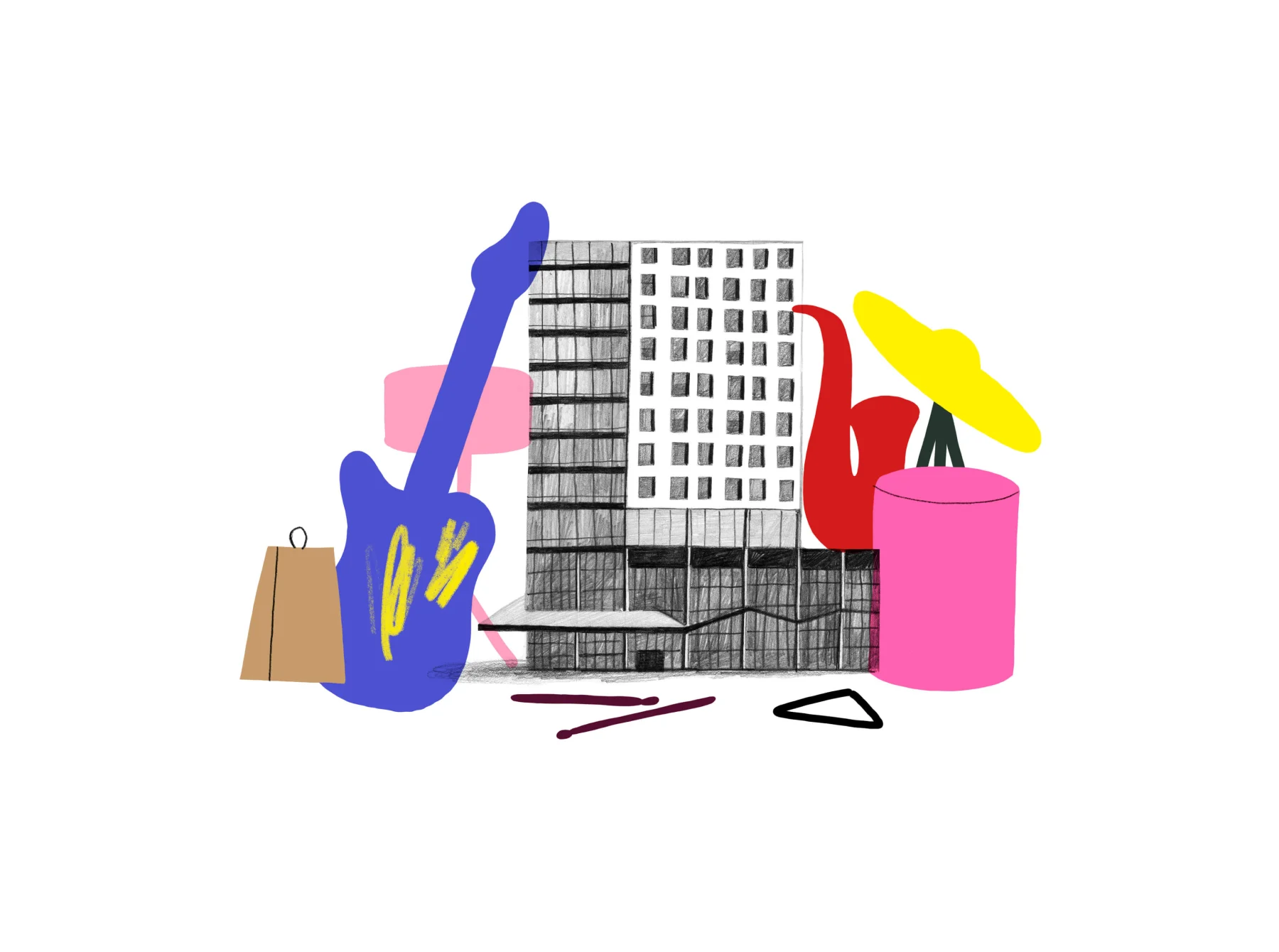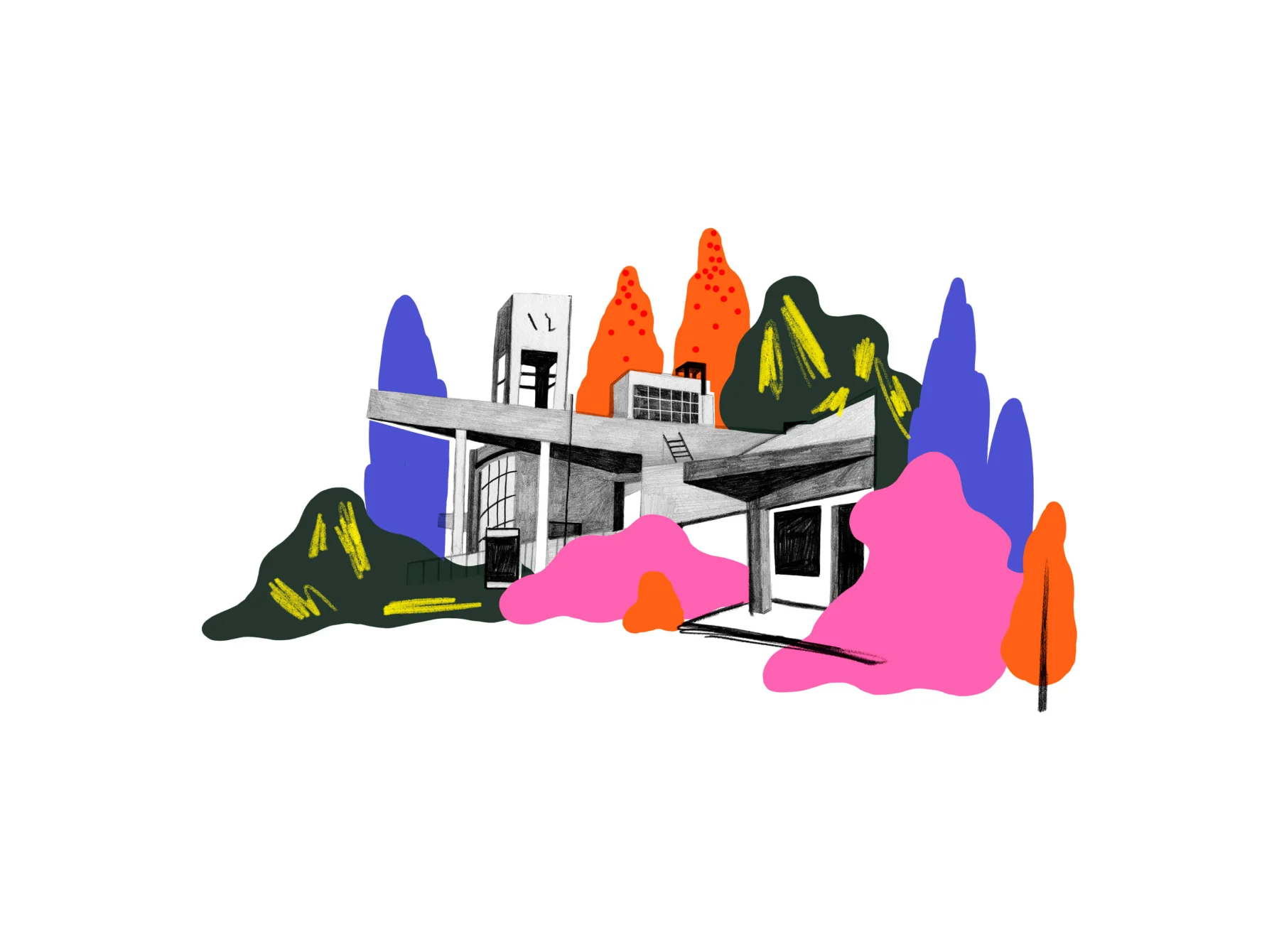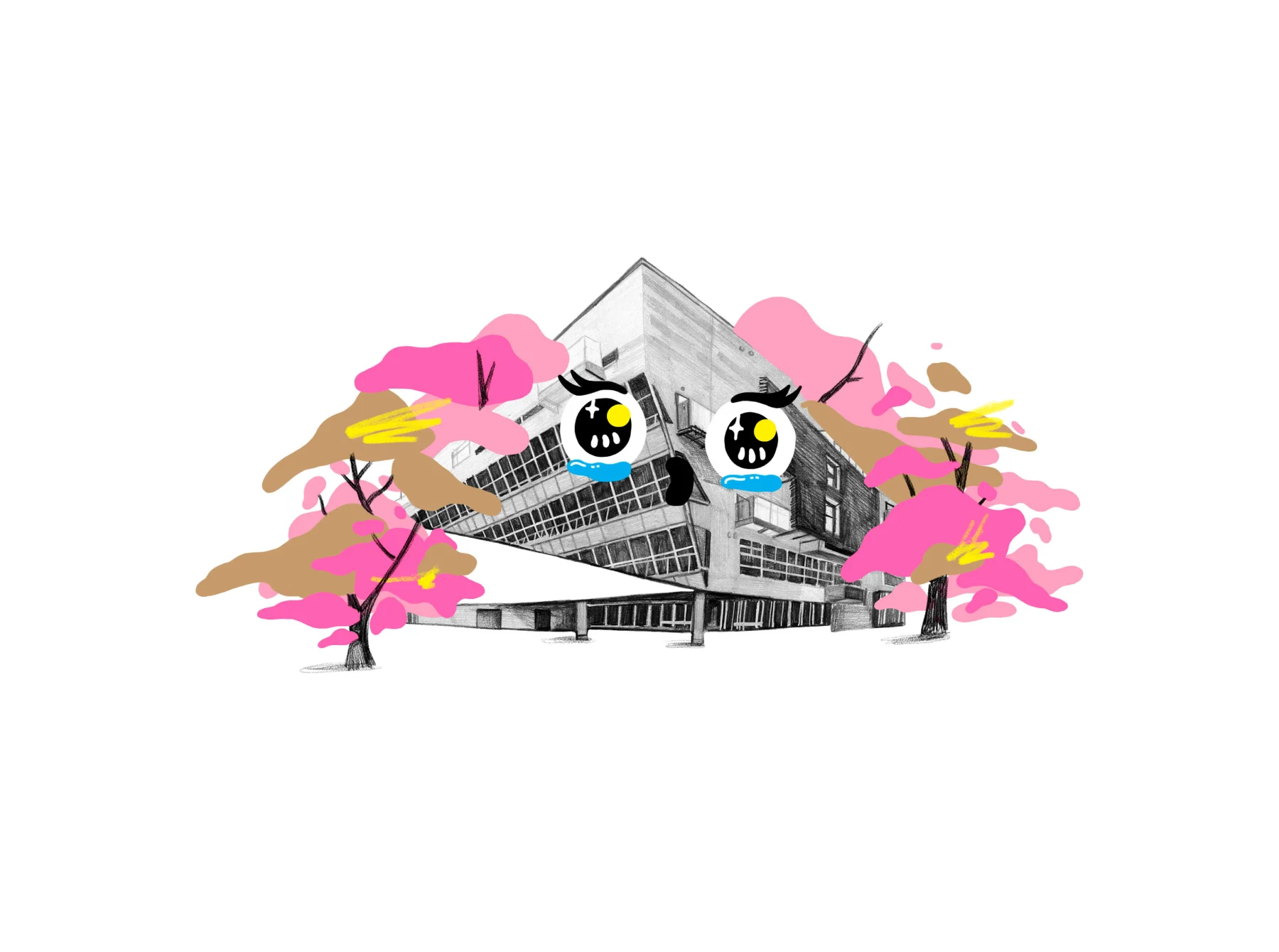
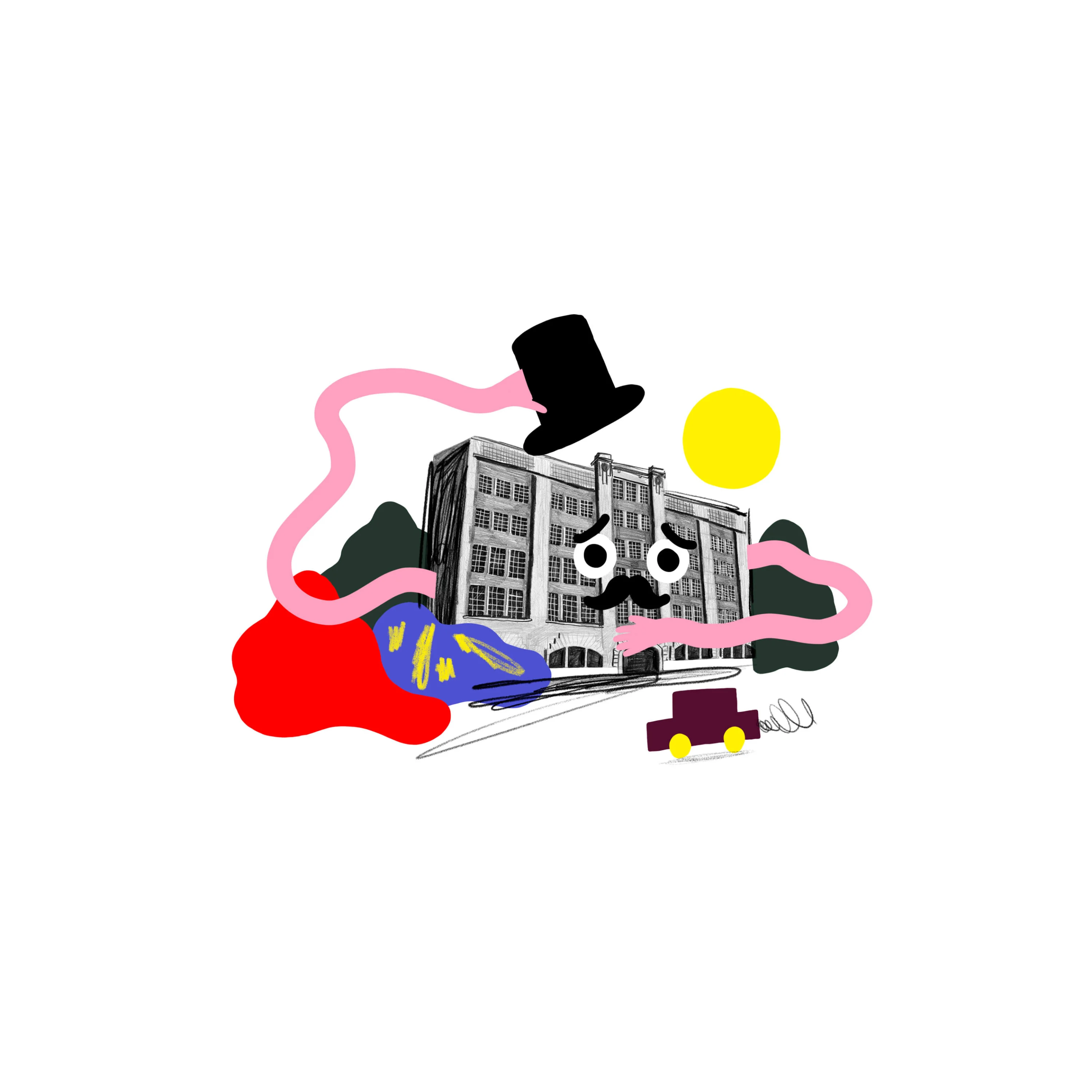
Creative education is vital. But creative education is, in places, broken. So WeTransfer has long been interested in supporting new types of programs.
It’s why we helped Nelly Ben Hayoun launch The University of the Underground, a free masters course that uses design thinking to challenge the way the world works.
From there, we developed the Pioneers list. Working with our pals at Creative Lives in Progress (formerly Lecture in Progress), we have identified eight schools around the world who deserve credit for doing things differently. See the whole list here.
Nestled near the Latin Quarter in the heart of Paris stands Gobelins, l’École de l’image. Travel up the stairs to the first floor of this brick-walled building – a renovated underwear factory to be exact – and at the end of a locker-lined hallway, you’ll find a floor-length mirror. “Yes! To make faces!” says Cécile Blondel, the school’s head of international relations. “There are a lot of very weird scenes in the corridors at Gobelins.”
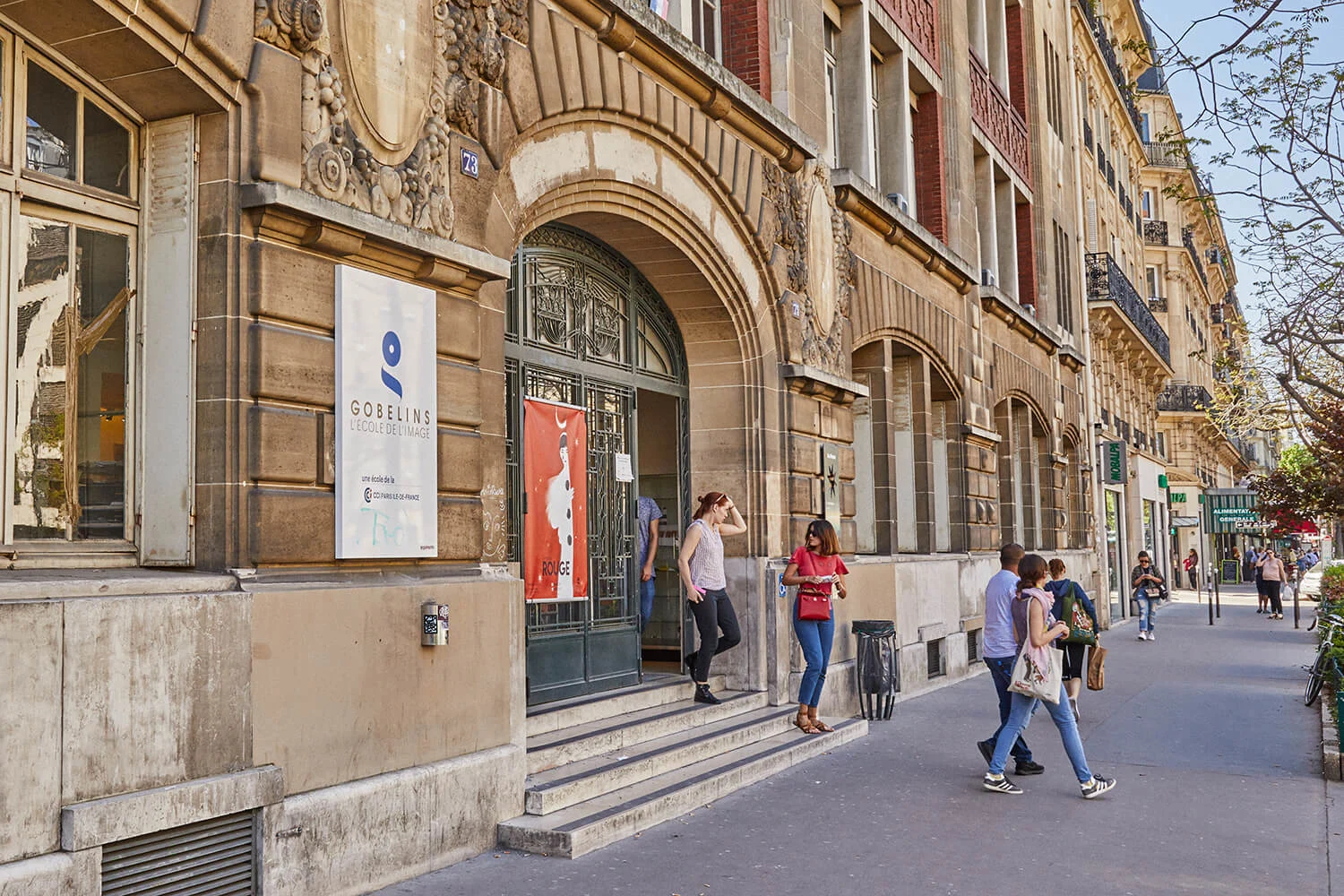
The floor is home to the school’s world-renowned Cinéma Department of Animation. “The students mime everything. The best guinea pig is yourself, so if you’re looking for realism, you make a movement and study it. You draw until you’ve understood the muscles, the articulation, the volume, gravity – everything.”
Observation is at the heart of Gobelins' practical, project-based teaching. And while its students are looking to create lifelike characters, Gobelins, too, has continued to be reflective of industry needs, commanding an equally realistic, outward-facing viewpoint. It’s built into the very foundations of the programme.
Originally founded by the Parisian Chamber of Commerce and Industry (CCIP) in 1964, Gobelins is now one of the oldest animation schools in the world. Its animation department was established by Pierre Ayma in 1975, but it owes much to René Goscinny and Albert Uderzo – creators of the iconic French comic series, Astérix.
The students mime everything. The best guinea pig is yourself, so if you’re looking for realism, you make a movement and study it.
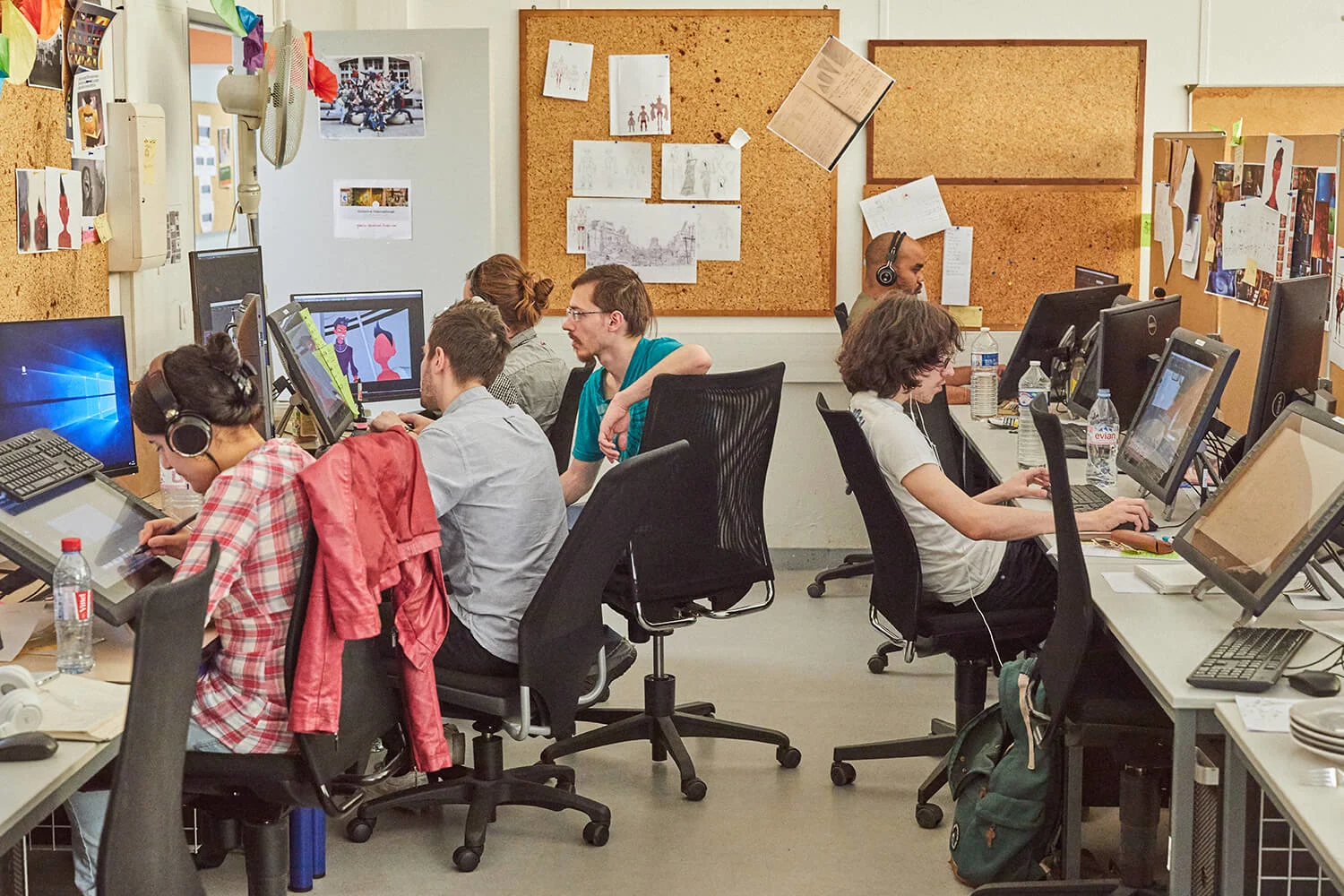
Uninspired with the visual look of earlier Astérix film adaptations, Goscinny and Uderzo set up Parisian animation studio, Idéfix, with reported aspirations of becoming the French Walt Disney.
But when the studio couldn’t find enough people to work on their upcoming feature film, they approached the Chamber of Commerce to ask if Gobelins could set up a program to train animators. They’ve been doing just that ever since. Les Studios Idéfix may have shut its doors in 1978, but its legacy remains.
Gobelins still remains dependent on the financial support of the CCIP; if fewer than 85% of graduates find jobs within the first six months of leaving, the programme risks closure.
But they do find jobs – all over the world, in fact. Gobelins’ holistic approach to teaching means that graduates go on to work as character designers, storyboard and background artists, film directors and more. The conditions set out by the Chamber of Commerce are a vital motivator in keeping Gobelins high in the league tables, but there’s more than competitiveness itself that underpins this desire for success. “Competition and rivalry… That’s a bit outdated, isn’t it?” Cécile says.
When we talk about art and design schools, it’s common to fixate on the future; to ask what responsibility an institution has to prepare its students for industry or how it might progress a discipline. But for Gobelins it’s remaining rooted in the present that allows it to be responsive to the future. And that means it is betting on 2D animation.
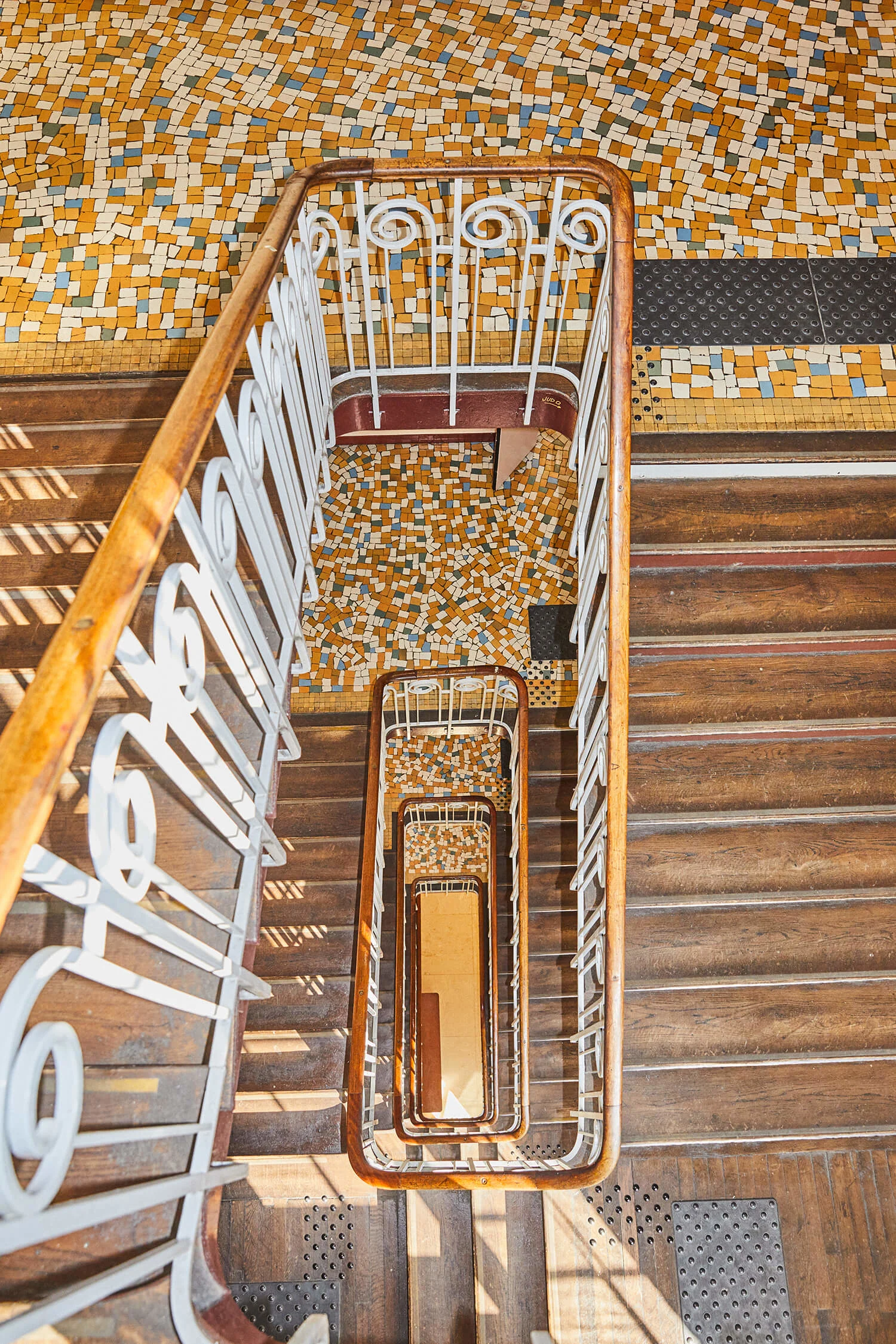
The needs of the market are not only to make films, but to create films; to work in conception, not just production.
“Everyone has to start with 2D, and they love it,” Cécile says. This isn’t some kind of archaic obstinacy, it actually makes a lot of sense. Amid an animation landscape that is rendered increasingly in three dimensions, the 2D industry in France is burgeoning. As Moïra Marguin, head of the school’s animation department notes, on average France produces around ten feature films a year, and of these, 90% will be 2D, not 3D productions.
This isn’t to say that Gobelins has vetoed 3D – on the contrary, one of its most famous success stories, student film Oktapodi – a 3D short film – was nominated for an Oscar in 2009. By training students in the fundamentals of 2D, Gobelins is simultaneously teaching them to work in 3D too. Because above all a character must be believable, be that using pencils or pixels.
“Your character is your body. You can feel how movement works, like you have a character at the tip of your fingers,” Cécile explains. But exactly how a character or story is realized is completely up to students, whether working experimentally or commercially; on paper, a digital tablet, or a mixture of these.
“We give students the best technical level possible, so that they can then get rid of it,” says Moïra. “They don’t have to think about it anymore.”
Compared to the first cohort of Gobelins graduates, who were mainly technical assistants, today Gobelins develops an individual’s own artistic flair alongside technical precision. “The needs of the market are not only to make films, but to create films; to work in conception, not just production.”


Your character is your body. You can feel how movement works, like you have a character at the tip of your fingers.
The department employs a team of six full-time staff, complemented by visiting lecturers – of whom more than 90% are working professionals. They all come together to inform the school’s curriculum. “This,” Moïra adds, “is one of Gobelins’ secrets.”
The 2D industry might well be flourishing in France, but what does the future of the global landscape look like? For Moïra, it’s becoming more about the audience. “The future of animation is to touch all kinds of audiences. That’s why the future of animation has to be an international one.”
Gobelins offers a range of French-speaking courses that include both an MA and four-year degree programme in character animation, and a one-year degree in 3D character animation. Students are encouraged to travel, taking on at least two internships during their studies. Two years ago, the school also introduced an English programme comprised of students from 16 different nationalities.
Alongside this, taking into account its summer school, academic exchange schemes (including a 15-year-old programme with CalArts in the US) and a new online programme, this year alone Gobelins will welcome students from China, the Middle East, the US, Germany and more. “We try to mix the international students with the French students as much as possible,” Cécile says. “It’s such a bubbling, simmering witch’s soup!”

Much has been made of Gobelins’ famous alumni. And it’s not hard to see why, with notable examples including Despicable Me’s Pierre Coffin and DreamWorks senior supervising animator Kristof Serrand. Graduates consistently go on to work for acclaimed American animation studios, from Disney-Pixar, Universal and Warner Bros to Hanna-Barbera.
France may be the leading producer of animation in Europe, but the US continues to be an animation powerhouse, and one that is receptive to what Cécile describes as a “French touch” in filmmaking. “The French are super-attentive to graphics and aesthetics, but also poetics.”
But if its eyes are increasingly turned outwards, Gobelins is still shaped by Paris in many ways. “To be in Paris is very important,” Moïra says. “To be creative you need to have lots of references in your head.”
The surrounding district, also called Gobelins, is littered with museums, and when students are not being their own guinea pigs, they can be found at the Muséum National d'Histoire Naturelle, drawing live animals in a small nearby zoo or studying skeletons in the Grande Galerie de l’Évolution.
“Our school is not open 24 hours a day, and we do this on purpose. We want the students to make the most of Paris while they are here.” It’s an effect that’s not lost on its teaching staff either. “The architecture, colors, materials, sounds, people… Paris is a very diverse city.”

Clearly Gobelins is onto a winning formula. Cécile is now in the midst of the next year’s admissions process. “We don’t have many students. We don’t do numbers, we do quality.” Openness, attitude, respect, generosity, teamwork. These are the traits they look for.
But what are the applicants themselves looking for? Why study animation in 2018? “Because I think there’s a new language,” Cécile says. “People want to collaborate, and they want to talk to each other. Animation is a very universal way of communicating.” She pauses. “When you’re animating, everybody can understand you.”
Words by Marianne Hanoun
Photos by Raphaël Lugassy
Illustration by Jordan Andrew Carter
Name: Gobelins, l’École de l’image
Location: Paris, France
Head of the Animation Department: Moïra Marguin
Courses Offered: MA and four-year degree programme in character animation; one-year degree in 3D character animation; annual summer school in character animation and online animation courses
Notable Alumni: Despicable Me’s Pierre Coffin; DreamWorks senior supervising animator Kristof Serrand; Violaine Briat, storyboard artist on The Loud House; Bibo Bergeron, director of A Monster in Paris, The Road to El Dorado and Shark Tale; and Rikke Asbjoern, co-creator of Pinky Malinky


